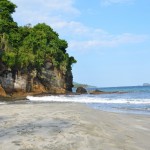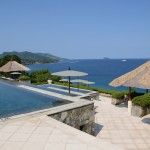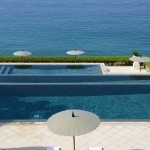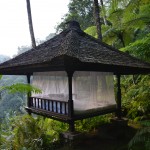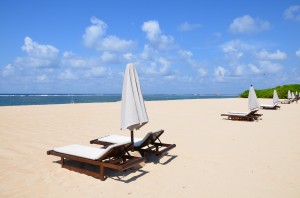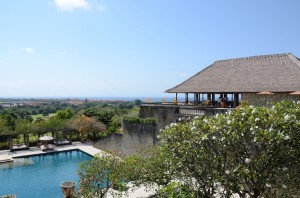By Paul Rubio
Beyond South Bali’s crowded shorelines, life quickly changes heading east.
Frenetic traffic gives way to isolated roads bordered by stacked rice terraces and lush jungle. Scenes of daily village life quickly usurp the fast food and motorcycle calamity. Circumventing the eastern coastline towards the traditional villages of Manggis, Cadidasa, and Tenganan, colossal vines and palm trees vie for space along dramatic cliffsides. Secluded beaches usher in the rising tides from the Straits of Lombok.
Navigating this shoreline feels like a journey back in time. Women stroll along roadsides, balancing buckets of salak (snake fruit) on their heads, and children weave delicate floral arrangements called banten canang as religious offerings for life cycle ceremonies within the village. The colors, the smiles, and the sounds – they’re all so vibrantly expressive. Many of these traditional scenes stem for the Balinese devotion to their own version of Hinduism – Agama Hindu Dharma. This fidelity has resulted in an island of “1000 temples,” none more important than east Bali’s 11th century Mother Temple of Besakih, the inspiration for every temple found in Bali’s countless villages.
Unobtrusively situated in this land of time bygone, east Bali’s most prized resort, the 34-villa Amankila (amanresorts.com) serves as an ambassador and gateway to the island’s coastal stronghold of anthropology and ecology, fostering cross-cultural interactions in near-by villages and facilitating day trips throughout the magnificent countryside. Amankila, or “peaceful hill,” is romanticized utter seclusion at its finest, tranquility in the shadow of the island’s apex, Mount Agung.
The majority of guests at Amankila strive for equilibrium between tropically breezed, unabashed pampering and immersion in Bali’s nature and traditions; and the resort offers the best of both worlds. An early morning sunrise trek to picturesque Gumang Hill or a snorkeling cruise aboard Aman XII is complemented by an afternoon of spa treatments and a beachside private candlelite dinner.
Likewise, a full afternoon of exploring villages, frolicking in renowned water palaces, and bargaining in local markets, often begins with a picnic breakfast on top of the world at either of Amankila’s romantic satellite bales and later ends with a Rijsttafel dinner, a ten course Indonesian dining extravaganza. For those wanting to simply enjoy the understated elegance and outstanding amenities of the resort, opportunities for sheer relaxation are infinite – whether in-suite, beachfront, hilltop, or hillside. Your best memories may well surface as long afternoons, sampling each level of the three-tiered infinity pool or nursing glasses of fine wine at the exclusive beach club amidst a coconut grove.
Next to Amankila, here in the rustic East, you’ll also find Alila Manggis (www.alilahotels.com/manggis) a moderately priced hotel offering exceptional value in a tremendous location. The hotel’s extensive list of activities – from treks to snorkeling trips to visits to uninhabited nearby islands – are experiential and dutifully capture the essence of east Bali.

